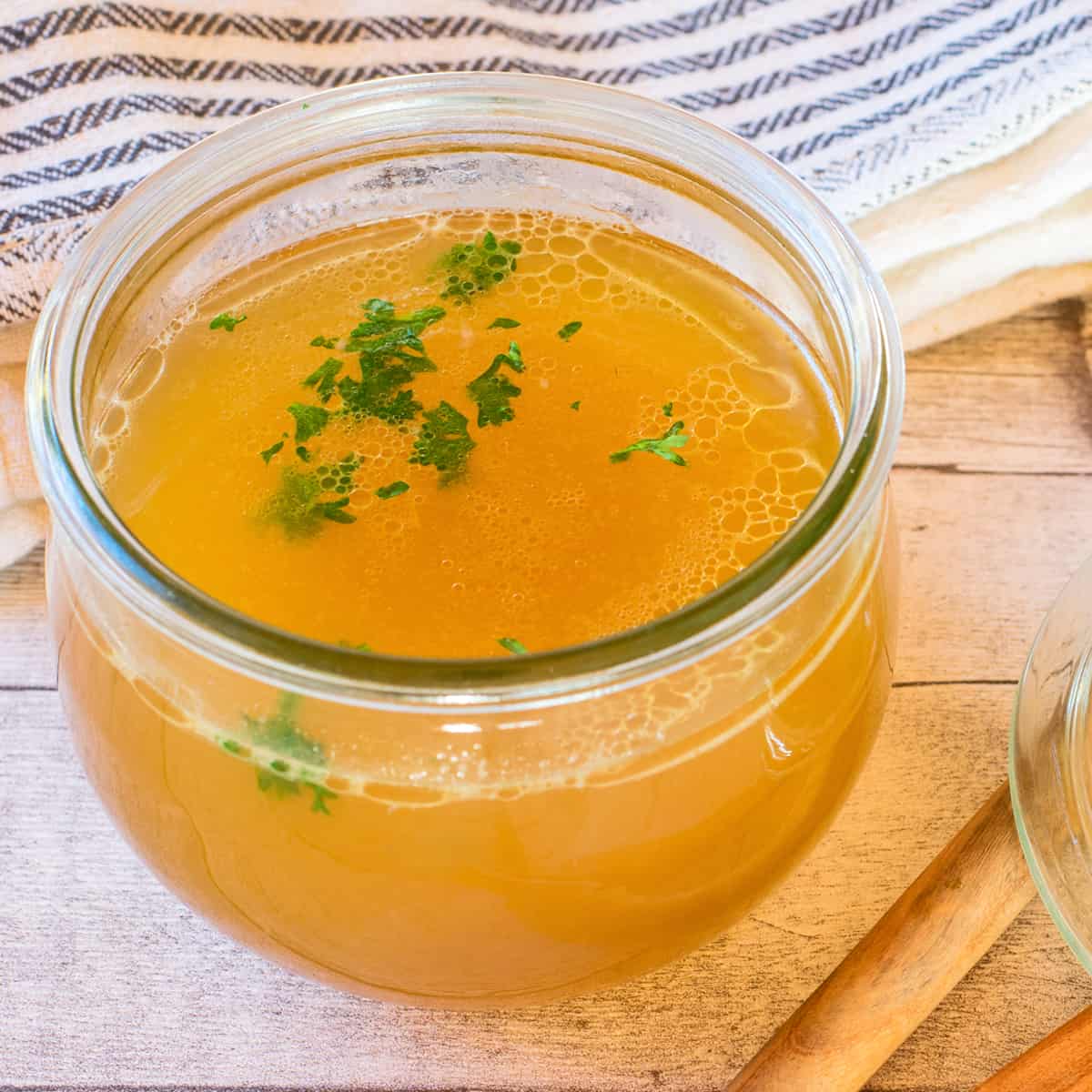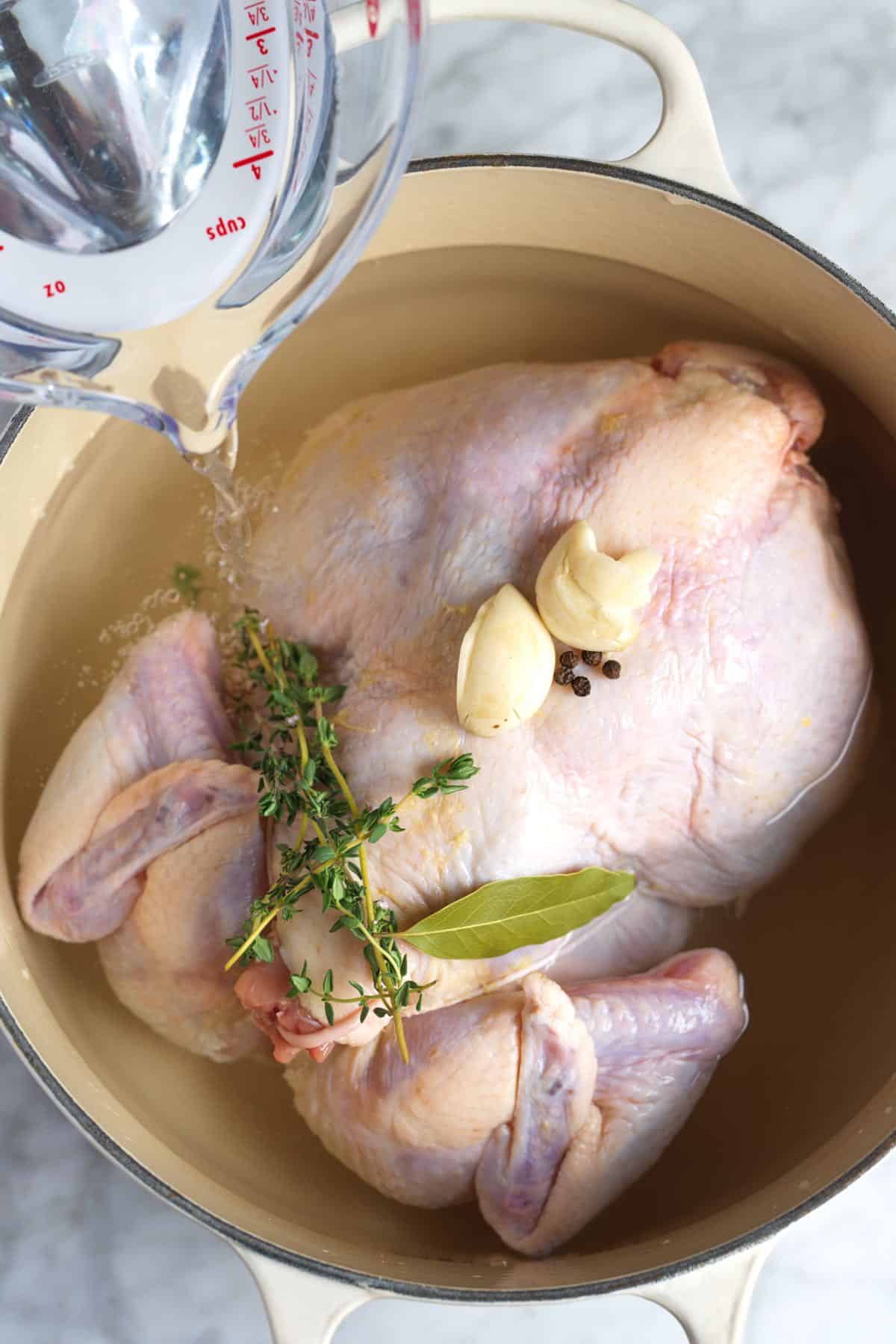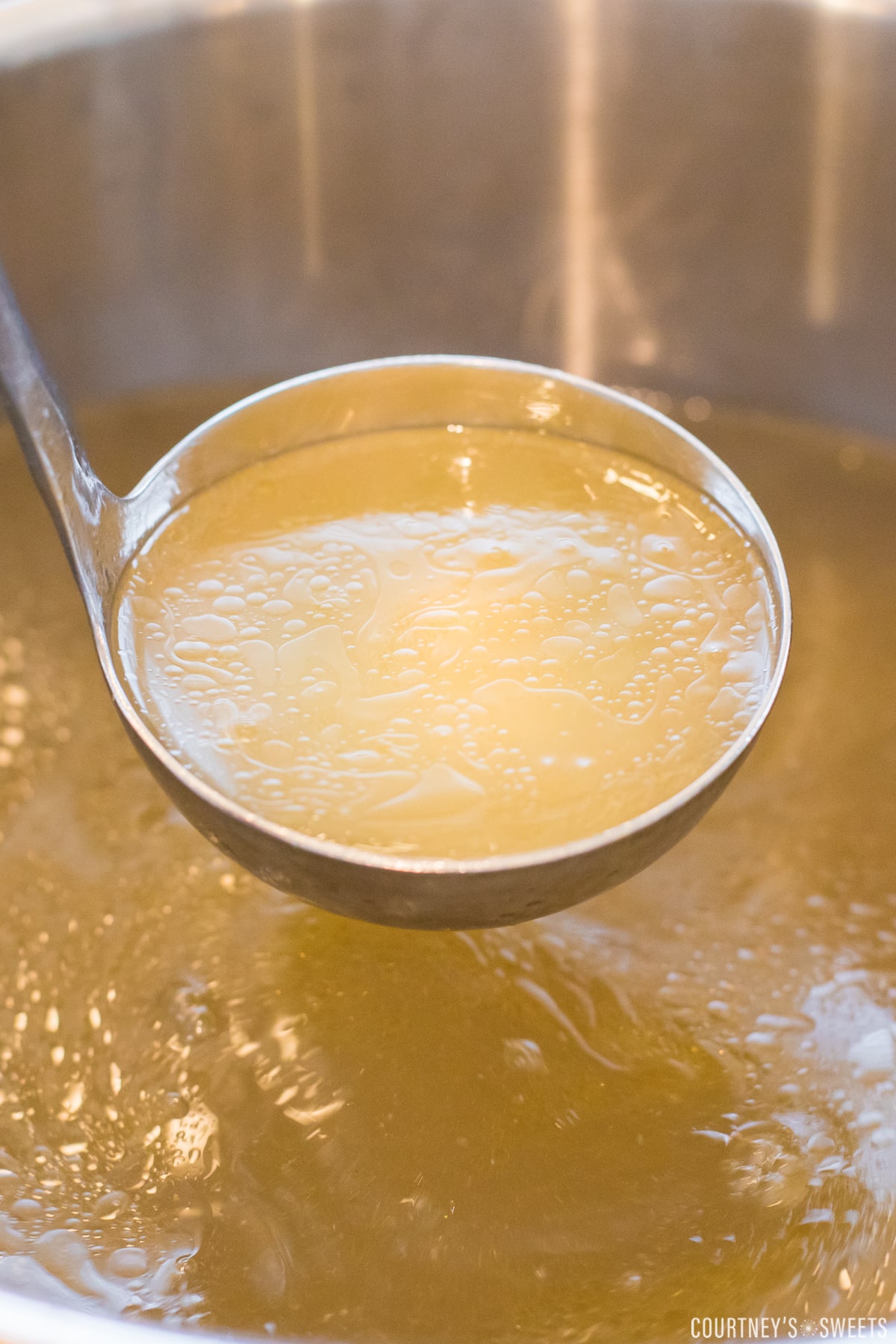What Makes Chicken Broth a Powerful Wellness Tool?
The Ultimate Overview to Making and Appreciating Organic Bone Broths in your home
Bone brew has gained attention for its various health benefits and culinary convenience. Crafting natural bone broth in the house permits people to control the quality of active ingredients, making certain a nourishing end result. Understanding the option of bones, essential flavor parts, and appropriate cooking strategies is crucial. As the process unravels, one may ask yourself exactly how to elevate their brew past the fundamentals and incorporate it into daily meals for boosted taste and nourishment.
Understanding the Health Perks of Bone Broth
Although bone broth has been a staple in various foods for centuries, its wellness advantages have gotten substantial focus in the last few years. Rich in collagen, amino acids, and minerals, bone broth is usually touted for its possible to sustain joint health, boost digestive tract function, and enhance skin elasticity. The gelatin stemmed from cooked bones might assist food digestion and aid secure the intestine lining, possibly alleviating issues like leaky gut syndrome.Furthermore, the presence of nutrients such as glucosamine and chondroitin may add to decreased inflammation and pain alleviation in joints. In addition, bone broth is moistening and can work as a nourishing base for stews and soups. Lots of supporters likewise claim that it increases the body immune system, many thanks to its mineral account. Overall, the resurgence of rate of interest in bone broth is connected to its regarded ability to promote general wellness and support numerous physical features.
Picking the Right Bones for Maximum Flavor and Nutrition
What elements should one think about when picking bones for broth prep work? The kind of bones used greatly affects both flavor and dietary value. Initially, it is essential to pick bones that include a mix of marrow bones, joint bones, and weighty bones. Marrow bones offer healthy fats and rich tastes, while joint bones contribute collagen, enhancing the broth's nutritional profile.Additionally, sourcing bones from grass-fed or pasture-raised animals assurances higher high quality and even more nutrients, as these pets are usually healthier. The quality of the bones is also vital; selecting bones from neighborhood butchers or farmers' markets can guarantee ideal flavor. Bone dimension matters also; larger bones launch more gelatin, causing a richer broth. Taking into consideration the kind of pet-- beef, fish, or chicken-- can affect the final taste, enabling for functional brew alternatives customized to individual preferences.
Vital Active Ingredients for a Delicious Bone Broth

Quality Bone Selection
The structure of a savory bone brew depends on the mindful choice of high-quality bones. Sourcing organic, grass-fed or pasture-raised bones is vital, as these options are most likely to be cost-free from damaging additives and offer remarkable nutrients. Ranges such as beef, chicken, or lamb bones each impart distinctive flavors and health and wellness advantages. Bone kinds, consisting of marrow bones, knuckle bones, and oxtails, add gelatin and collagen, boosting the brew's appearance. Picking bones with a mix of meat and connective tissue can additionally add splendor and depth. In addition, picking bones with visible marrow ensures a nutrient-dense broth, elevating the general high quality. Eventually, investing time in quality bone selection prepares for a tasty and nourishing broth.
Fragrant Flavor Boosters
Choosing top quality bones establishes the stage for a rich and nourishing bone broth, yet it is the enhancement of fragrant taste boosters that genuinely raises the recipe. Ingredients such as onions, garlic, and carrots not just present sweet taste however likewise contribute deepness to the brew. Fresh herbs like thyme, parsley, and bay leaves add a great smelling note, while flavors such as black peppercorns and cloves present heat and intricacy. Furthermore, including a dash of apple cider vinegar can help extract minerals from the bones, improving the brew. These taste boosters develop a harmonious blend, transforming a straightforward brew into a savory structure for soups, stews, or sauces, making it a functional component in any type of culinary collection.
Step-by-Step Overview to Making Bone Broth in the house
Creating bone broth in the house can be a rewarding culinary endeavor that boosts both taste and nourishment in numerous dishes. To start, one should pick high-quality bones, ideally from organic or grass-fed sources. Roasting the bones at 400 ° F for concerning half an hour can escalate the taste. Next, transfer the baked bones to a big pot or sluggish stove and cover them with cool water. Including a dash of vinegar helps essence minerals from the bones.Include fragrant vegetables like onions, carrots, and celery for added depth, along with natural herbs and flavors as wanted. Bring the mixture to a boil, then minimize to a simmer. It is important to let the broth simmer for a minimum of 12 hours, however longer is more suitable for optimum richness. Strain the brew with a fine-mesh screen and shop it in impermeable containers, all set to elevate dishes with its healthy significance.
Tips for Perfecting Your Bone Broth Simmer
While simmering bone broth, keeping the right temperature level and timing is essential for attaining a rich and savory result. A mild simmer, preferably in between 190 ° F and 210 ° F, helps essence optimum nutrients and tastes without steaming, which can make the broth cloudy. It is recommended to monitor the pot very closely, adjusting the heat as essential to keep this simmer.Timing is likewise essential; a longer simmer, normally varying from 12 to 2 days, enables for deeper flavor removal and collagen launch. For poultry bones, a 12 to 24-hour simmer is sufficient, while beef bones benefit from longer food preparation times.Additionally, skimming off any type of foam or pollutants that climb to the surface area throughout the very first few hours can improve the broth's quality and taste. Lastly, making sure the pot is covered during simmering aids to preserve dampness and increase the flavors, producing a more gratifying final result.
Imaginative Ways to Use Bone Brew in Your Cooking
Integrating bone broth into various recipes boosts both taste and dietary worth. Chefs and home chefs alike locate that using bone broth as a base for stews and soups enhances deepness and splendor, changing simple dishes right into hearty dishes. It can also be employed in risottos, where the brew replaces water, enabling the grains to absorb its tasty essence.Additionally, bone brew functions as a superb cooking fluid for grains like quinoa or rice, infusing them with nutrients and flavor. For see page an included spin, it can be made use of in braising meats, causing tender, flavorful end results. Even sauces take advantage of a dash of bone broth, improving their taste profile.Moreover, bone broth can be integrated right into shakes for an unexpected wellness boost, offering protein and nutrients without endangering taste. These innovative applications showcase the convenience of bone broth in daily cooking, making it a vital cooking area staple.
Storing and Preserving Your Home Made Bone Broth
Correct storage and preservation of homemade bone broth is essential for maintaining its taste and dietary advantages. Freezing methods and More Info refrigeration ideal methods play a crucial duty in prolonging the broth's life span. Comprehending these approaches can assist ensure that the broth continues to be scrumptious and secure for future use.

Freezing Methods Described
Cold strategies are essential for effectively storing and maintaining self-made bone broth, ensuring its abundant flavors and nutrients remain undamaged for future use. To freeze bone broth, it is advisable to allow it awesome entirely prior to moving it to storage containers. Glass jars, silicone molds, or sturdy freezer bags are ideal choices. When utilizing containers, leave area at the top for development during freezing. Portioning the brew right into smaller amounts permits easy thawing and minimizes waste. Label containers with the day and materials for simple recognition. For peak quality, take in the frozen brew within 3 to six months - Beef Broth. Thawing can be performed in the refrigerator or by using a microwave, ensuring that the brew is heated thoroughly before consumption
Refrigeration Best Practices
While many emphasis on cold as a method of conservation, refrigeration additionally plays an essential role in storing homemade bone brew efficiently. Once cooled, bone broth must be transferred to impermeable containers, assuring minimal air exposure to stop perishing. It is recommended to refrigerate brew within two hours of cooking to maintain its quality. Usually, homemade bone broth can be saved in the refrigerator for approximately five days. Labeling containers with dates can assist track quality. For peak flavor and safety, brew ought to be reheated to a rolling boil prior to usage. If longer storage space is called for, freezing continues to be an outstanding choice, but proper refrigeration practices assure that bone broth continues to be scrumptious and nutritious for temporary use.
Regularly Asked Inquiries
Can I Use Frozen Bones for Making Bone Broth?
The concern of making use of icy bones for bone broth occurs frequently (Organic Bone Broths). Specialists agree that icy bones can be used properly, yet they must be thawed before cooking to assure excellent flavor and nutrient removal
How Much Time Can I Shop Homemade Bone Broth?

Is It Safe to Reheat Bone Broth Several Times?
Reheating bone broth several times can present security worries - Beef Broth. Each reheating cycle boosts the danger of bacterial growth. It is recommended to reheat only when and keep any type of leftovers without delay to ensure safety and security and quality
Can I Include Veggies to the Broth for Flavor?
Including veggies to brew boosts flavor and dietary value. Common selections consist of carrots, onions, and celery. The vegetables infuse their essence right into the broth, creating a richer and more mouthwatering final item.
What's the Finest Way to Defrost Frozen Bone Broth?
To defrost frozen bone broth, one can position it in the refrigerator over night, make use of a microwave on low warmth, or submerge the sealed container in warm water, making sure also thawing without jeopardizing flavor or nutrients. It is crucial to choose bones that include a mix of marrow bones, joint bones, and meaty bones. Marrow bones offer healthy and balanced fats and abundant flavors, while joint bones contribute collagen, improving the broth's dietary profile.Additionally, sourcing bones from grass-fed or pasture-raised pets warranties higher high quality and more nutrients, as these pets are generally healthier. Bone kinds, including marrow bones, knuckle bones, and oxtails, add gelatin and collagen, boosting the brew's texture. Choosing high-quality bones establishes the phase for a abundant and nutritious bone brew, but it is the addition of fragrant flavor boosters that absolutely boosts the dish. Also sauces profit from a dash of bone broth, enhancing their preference profile.Moreover, bone brew can be integrated into smoothie mixes for an unforeseen health boost, providing healthy protein and nutrients without endangering taste.